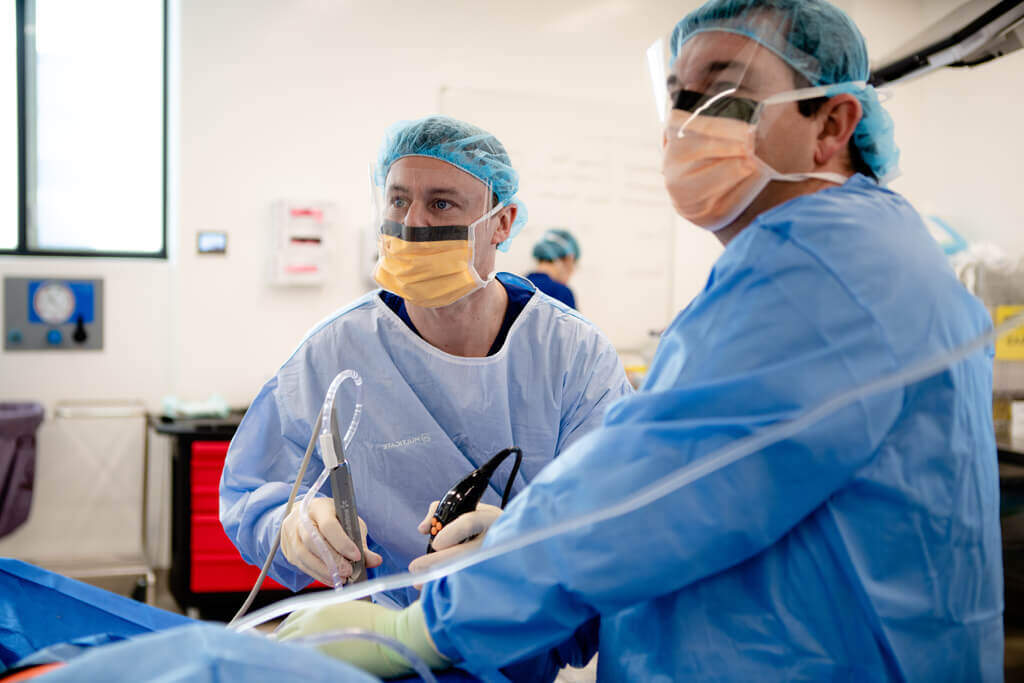Meniscal tears and knee arthroscopy
The meniscus is a piece of cartilage located in the knee joint. Acting as a shock absorber between the femur (thigh bone) and the tibia (shinbone), it distributes impact and stabilises the knee.
Meniscal tears are one of the most common knee injuries. They can result from any activity that causes forceful twisting or rotation of the knee, such as a sudden change in direction (common in many sports). Kneeling, deep squatting, heavy lifting, and falls can also rupture the meniscus, especially in older adults.

Symptoms & treatment
Meniscal tears present as pain within the knee joint. This often accompanied by swelling and a locking or catching sensation – you may be unable to fully bend or extend the knee due to pain or stiffness. The knee may be unable to support your weight, causing a limp or collapse on attempts to walk.
Treatment for meniscal tears
Stable or short tears that aren’t displaced may settle with rest alone. In this case, your doctor may recommend non-steroidal anti-inflammatory medications (NSAIDs) to reduce pain and swelling.
Larger tears typically do not heal on their own and require surgical intervention. The preferred approach is via knee arthroscopy.
Arthroscopic surgery for meniscal tears
‘Arthroscopy’ refers to the use of specialised tools to perform a surgery through small openings. There are several ways to manage meniscal tears.
One approach is meniscal repair. The surgeon uses specialised, tiny tools to stitch the torn edges of the meniscus back together. This procedure is very common and in most cases successfully restores normal function.
A partial meniscectomy may be used to treat meniscal tears which are unlikely to heal with repair. This involves trimming away and removing the damaged part of the meniscus, reducing friction and the resulting pain. It may be accompanied by a meniscal transplant (graft) to replace the removed cartilage, although this is not usually the case.
Indications for arthroscopic surgery
The shape, size, and location of the tear is assessed when determining suitability for arthroscopic intervention.
Larger meniscal tears located in the vascular zone (the part of the meniscus with blood flow) are the best candidates for arthroscopic repair. Tears located in posterior horn (the back third) of the meniscus may be inaccessible via arthroscopy, and best managed by open surgical repair.
Some tears – such as ones caused by wear-and-tear or positioned horizontally – may not heal, even with surgery. In this case, an arthroscopic partial meniscectomy may be performed instead.
Recovering from knee arthroscopy
As knee surgery is a minimally invasive procedure, you generally will not need to remain in the hospital overnight and can go home the day of the surgery.
Driving within 24 hours of receiving a general anaesthetic is not recommended. Following this period, you can generally resume driving once you feel confident in bearing weight on your leg. Most patients can do this around a week after surgery, although it varies from person to person.
Dr Jonathan Cabot will discuss the need for any walking aids.